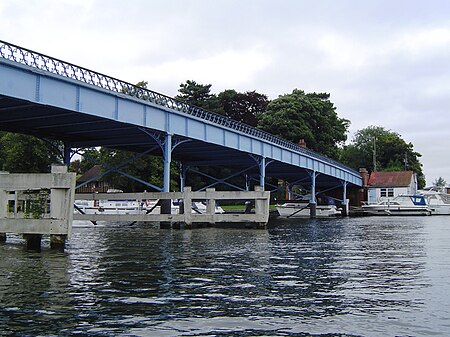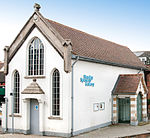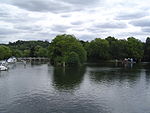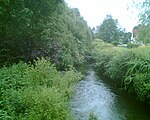Cookham Bridge

Cookham Bridge is a road bridge in Cookham, Berkshire, carrying the A4094 road across the River Thames in England. It is on the reach above Cookham Lock and links Cookham on the Berkshire bank with Bourne End in Buckinghamshire. Discounting a Roman bridge nearby, the bridge opened as a wooden bridge in 1840 in place of a longstanding ferry but today's iron-based structure dates from 1867. For 107 years a toll was payable – ceasing in 1947 when Berkshire County Council bought the bridge from its private owners. The bridge has a single lane for vehicles controlled by traffic lights at each end, and pedestrian pavements. The vehicle weight limit is 7.5 tonnes, save for buses and coaches.
Excerpt from the Wikipedia article Cookham Bridge (License: CC BY-SA 3.0, Authors, Images).Cookham Bridge
Ferry Lane,
Geographical coordinates (GPS) Address External links Nearby Places Show on map
Geographical coordinates (GPS)
| Latitude | Longitude |
|---|---|
| N 51.562355 ° | E -0.705974 ° |
Address
Ferry Lane
Ferry Lane
SL6 9SW , Wooburn
England, United Kingdom
Open on Google Maps









